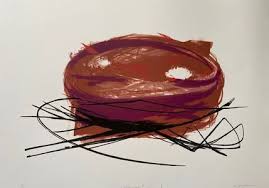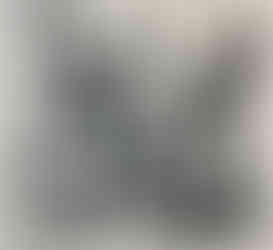In honor of International Women's Day, I thought it fitting to write a brief tribute to some of the many women artists - and promoters of the medium – involved in Japanese printmaking over the past century.
Artists, male and female, are driven to create. They have an intense need to commit the forms and marks of their imagination onto paper. Sometimes inspiration comes easily, but other times an idea has to be coaxed and prodded into revealing itself and may undergo many revisions before it is brought to fruition and finally resembles what the artist was envisioning in his or her head. To be able to take that time is a luxury for women who work, inside and outside the home, and one of the reasons why there have always been fewer women artists than male ones in Japan where traditional gender roles have been the norm.
For example, when Noriko SAITO (wife, and mother of two) traveled to the US in 2019 for a week’s visit with me, she mentioned what a gift it was to have seven days all to herself without having to think of anyone’s needs but her own. She wasn’t complaining, merely stating the fact that from the time she wakes up until she goes to bed, her life is consumed by seeing to others’ needs. She has to carve out time to go to the studio to work on a new print edition and that can easily be interrupted by the school nurse calling – because, of course, the mother is always the one who gets those calls. That being said, she will also mention how much her work has been inspired by her children’s play and imagination.
Mayumi ODA's bold, multicolored silkscreens often feature commanding goddesses, dispensing wisdom to the planet while emanating joyful confidence. She is an ardent feminist and devout Buddhist, whose love of color and undulating shapes has led to her being called "the Matisse of Japan" for decades. Unlike many artists who eschew politics, Mayumi founded Plutonium Free Future in 1993, an organization dedicated to eradicating nuclear plans and nuclear weapons. During her time of growing political awareness, she decided " It's time to stop painting goddesses and become one."
I could not write about women artists without including a brief mention of Toko SHINODA. Long considered the Doyenne of Japanese contemporary art, she served as an inspiration for many of the women artists working today, not only due to her immense talent, but for her intransigent refusal to compromise her artistic vision for anything that was considered a female subject matter, or a female role within society.
Some of you may have missed my email from earlier this week announcing Shinoda-san’s demise. Various obituaries have paid tribute to this great artist, and I attach links to them – as well as to a short blog post that I wrote about her last year.
New York Times obituary, here.
Washington Post obituary, here.
CNN obituary, here.
The first women’s art school Joshibi, was founded on October 30, 1900, as the Private Women's School of Fine Arts (PWSFA) in what is now Bunkyo-ku, Tokyo. Female students were not admitted to the prestigious Tokyo University of the Arts until 1946, spurred by the US Occupation’s efforts to promote women’s education.
Dr. Jeannie Kenmotsu, of the Portland Art Museum in Oregon, recently organized an exhibition on the little-known Joryu Hanga Kyokai, The Japanese Women’s Printmaking Association. (For more on this, please watch Dr. Kenmotsu's webinar, here). From 1956 to 1965, this association brought together a number of women printmakers who felt that they could achieve more as a collective. Consisting mainly of artists based in the Tokyo area, the association held several group shows both in Japan and the US before disbanding in 1965, after some of the founding members decided to strike out on their own. One of the better known artists from the group was stellar woodblock artist, Iwami Reika (1927-2020), about whom I wrote in a prior blog post.
The College Women’s Association of Japan (CWAJ) was founded in 1949 to provide scholarships and study opportunities for women in Japan to travel and study overseas. In 1956, the first CWAJ Print Show was held at International House in Tokyo, displaying 91 prints by 40 invited artists. This exhibition has provided an opportunity for many artists to exhibit their work on an annual basis, as long as the jury accepts the work submitted. The exhibition continues to the present day, with last year being the first time that it took place on a virtual platform due to the pandemic, and the women involved have been instrumental in creating a wider audience for the artists whose works they select.
There seem to be fewer printmakers these days, be they male or female. Citing how time intensive and laborious printmaking is, students enrolled in art universities are focusing on photography or computer graphics. We will have to wait for the pendulum to swing back, and for a new generation to discover the thrill of printing an image by hand, using the matrices of wood, stone, copper or glass.
In the meantime, the wonderful women artists whose work I represent grapple with the responsibilities of modern day living, all the while seeking to put down on paper what lives inside of them. Please have a look at their work linked to their website pages below or visit our March virtual exhibition whose focus is the diverse and creative works of the women artists of The Tolman Collection who we are so very proud to represent.
If you would like to schedule a Zoom appointment for a closer view of the art in which you are interested, please email me at allisontolman@gmail.com to schedule a viewing.





















Comments